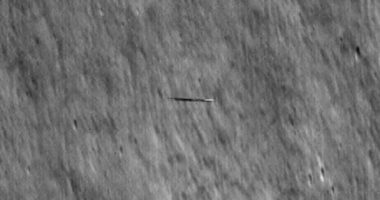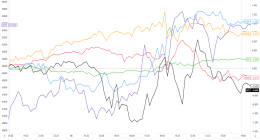STARGAZERS are in for a treat this week as there’s a chance to see a comet, Uranus at opposition and a ‘Blue Moon’ on Halloween.
The full Moon and Uranus should be easy to spot with the naked eye but you’ll need a pair of binoculars to see Comet P1 Neowise.
Halloween Hunter’s Blue Moon
Halloween on Saturday may feel even more spooky because a full Blue Moon will be in the night sky.
Unfortunately, its name has nothing to do with its colour and the Moon should just look pearly grey.
A Blue Moon refers to the very rare occasion when a full Moon appears for the second time in the same month.
This year we had a full Moon on October 1 called the Harvest Moon.
Nasa previously explained: “According to modern folklore, a Blue Moon is the second full Moon in a calendar month.
“Usually months have only one full Moon, but occasionally a second one sneaks in.
“Full Moons are separated by 29 days, while most months are 30 or 31 days long; so it is possible to fit two full moons in a single month.
“This happens every two and a half years, on average.”
Weather permitting you should be able to see it in all its bright glory after nightfall but try to avoid light polluted areas.
It’s being reffered to by some as the ‘Hunter’s Blue Moon’ because it appears around the time that Native American tribes would gather meat for the winter ahead.
Uranus at opposition
This Saturday will also see Uranus come into opposition, meaning it will look big enough and bright enough to spot with the naked eye.
The planet will be at its closest distance to us as Earth comes directly in between Uranus and the Sun.
It will be right on the cusp of naked-eye visibility so you may want to try looking through a small telescope or binoculars.
The blue-green planet takes 84 years to orbit the Sun so will stay in a similar position for this month and next.
Look towards the constellation of Cetus, Uranus will rise in the east at sunset.
To locate a constellation you can always download a sky scanning app that can also pinpoint planets for you.
Spot Comet P1 Neowise
Comet P1 Neowise is a different comet to the naked-eye Neowise comet everyone was talking about this summer.
However, it could still look just as cool with a pair of binoculars.
Try looking low on the eastern horizon just before dawn with your binoculars or a small telescope.
According to Universe Today, P1 Neowise will be making a brief dawn appearance for stargazers in the Northern Hemisphere from late October to early November.
Neowise comets are comets picked up by Nasa’s Neowise mission of the Wide-field Infrared Survey Explorer (WISE) space telescope.
The different types of moons
Here are some of the most interesting moon phases and when to see them…
A Blue Moon refers to the occasion when a full Moon appears for the second time in the same month, this is very rare and the next Blue Moon should occur on Halloween in 2020.
The Harvest Moon appears around the time of the autumnal equinox when farmers tend to do their main crop harvesting.
A Supermoon appears when it is at its closest point to Earth and therefore at its brightest, the next one will appear in September.
A Blood Moon occurs during a total lunar eclipse, the next one should happen in May 2020.
Each month of the year actually has its own special full moon phenomenon, they are as follows:
- January: Wolf Moon
- February: Snow Moon
- March: Worm Moon
- April: Pink Moon
- May: Flower Moon
- June: Strawberry Moon
- July: Buck Moon
- August: Sturgeon Moon
- September: Full Corn Moon
- October: Hunter’s Moon
- November: Beaver Moon
- December: Cold Moon.
In other space news, SpaceX wants to take its Starlink satellite broadband service to Mars.
Nasa released new footage of its daring mission to land a probe on ‘doomsday asteroid’ Bennu and collect an alien sample.
Nasa and Nokia are building a 4G network on the Moon.
Will you be stargazing this week? Let us know in the comments…
We pay for your stories! Do you have a story for The Sun Online Tech & Science team? Email us at [email protected]
This post first appeared on Thesun.co.uk


















